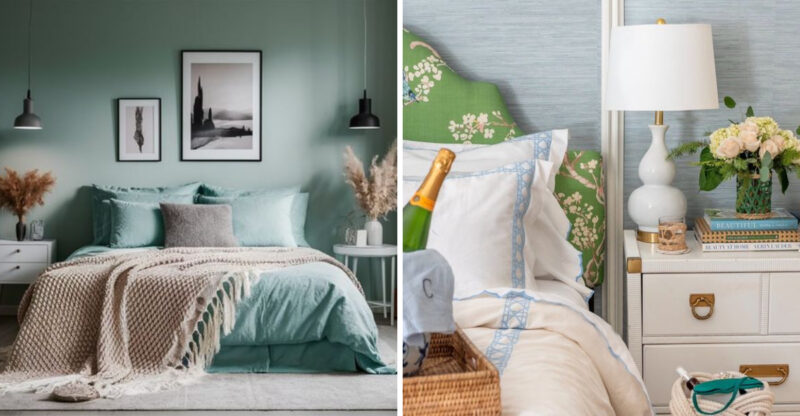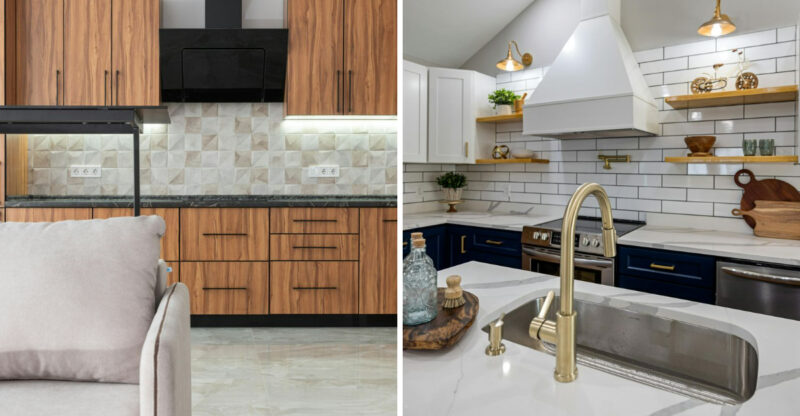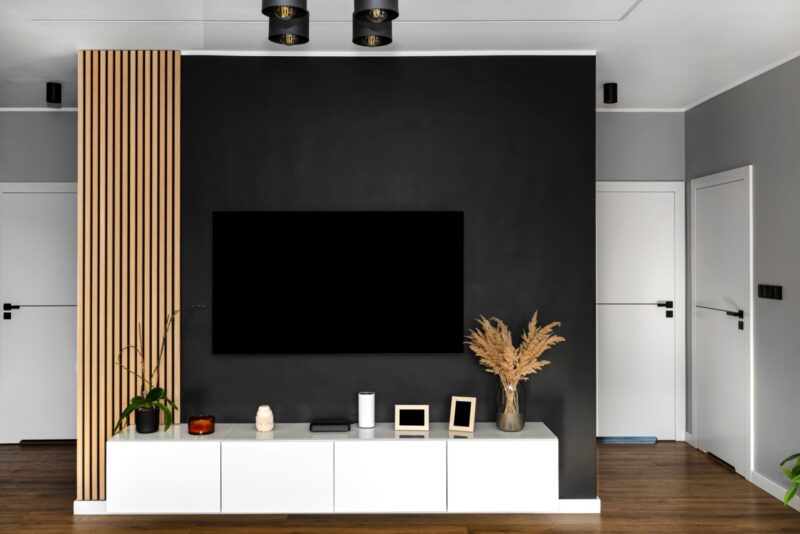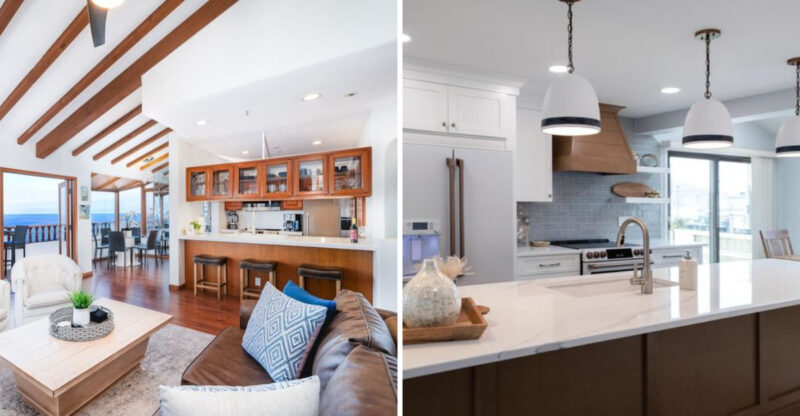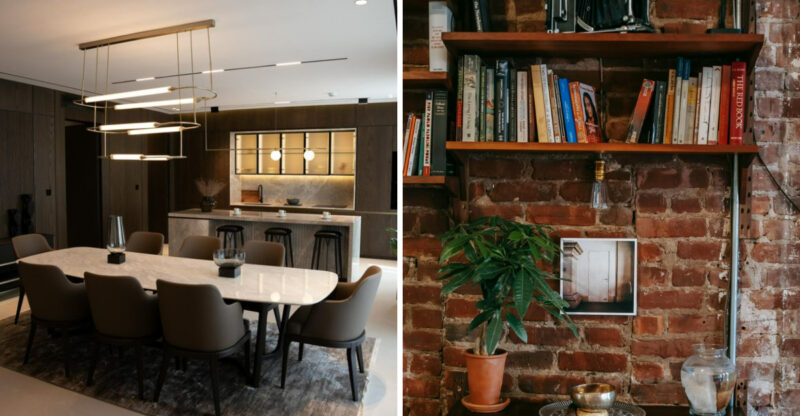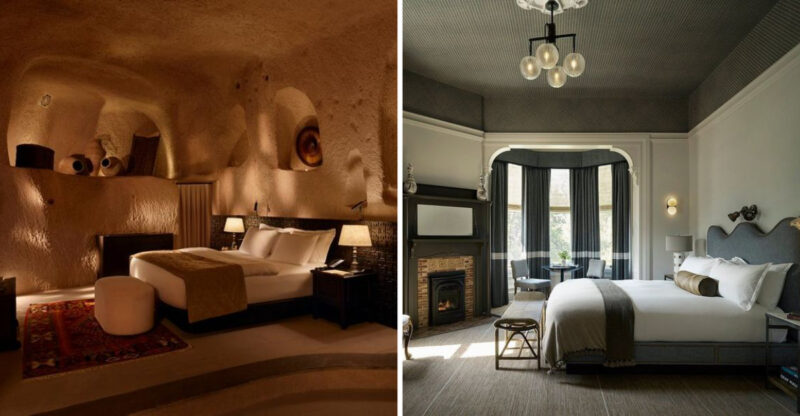17 Styling Missteps In Bedrooms That Make Homebuyers Walk Away
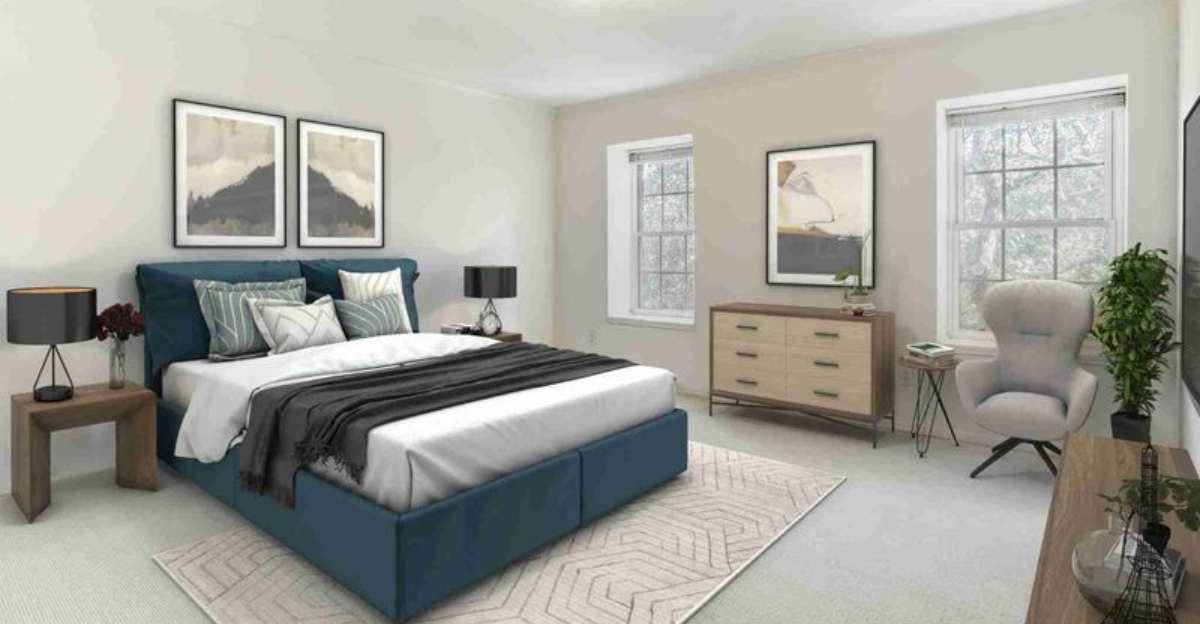
When selling your home, the bedroom can make or break a buyer’s decision.
These private sanctuaries need to feel peaceful, spacious, and inviting not cramped, chaotic, or outdated. I’ve seen potential buyers literally turn on their heels when confronted with certain bedroom styling mistakes.
Let’s explore the most common bedroom blunders that send homebuyers running for the exit.
1. Overcrowded Furniture
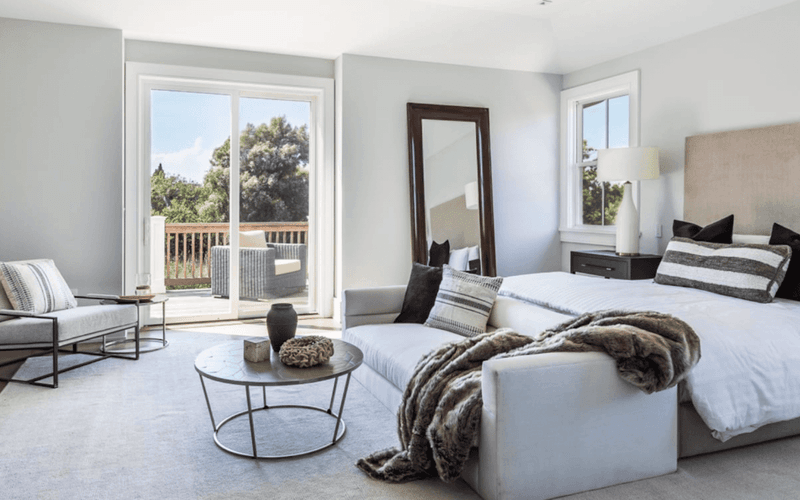
Cramming too many furniture pieces into a bedroom creates an instant claustrophobic feeling that buyers hate. I’ve watched potential buyers physically back out of rooms that felt like furniture warehouses.
Your bedroom should have breathing room with clear pathways around key pieces. A bed, nightstands, and perhaps one dresser might be plenty. Remove extra chairs, benches, and side tables that make navigation difficult.
When staging, remember the ‘rule of thirds’ leave about one-third of the space empty. This simple adjustment makes rooms appear larger and more peaceful, giving buyers room to imagine their own belongings in the space.
2. Clashing Patterns
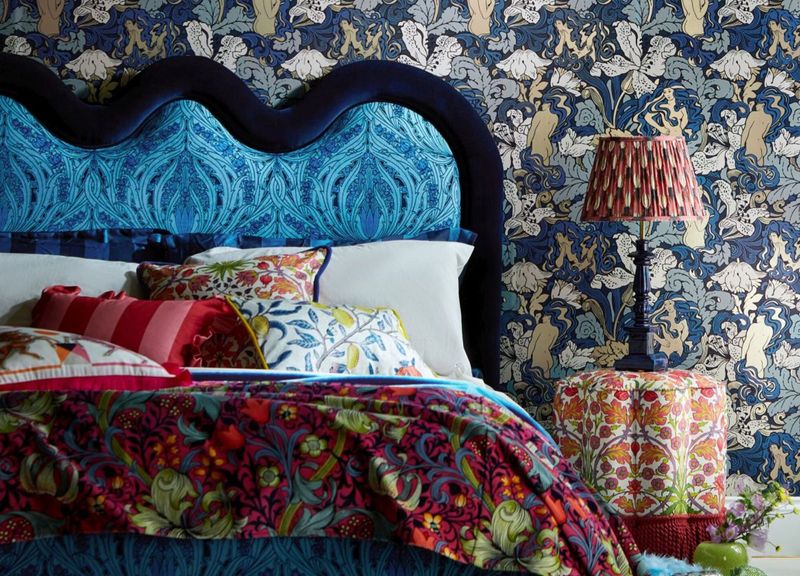
Walking into a bedroom with competing patterns feels like visual assault to homebuyers. Striped wallpaper fighting with floral bedding and plaid curtains creates immediate tension rather than relaxation.
Pattern harmony matters tremendously in bedroom design. If you love patterns, choose one dominant print and keep everything else complementary or solid. For example, a bold geometric duvet paired with solid sheets and simple curtains creates balance.
The bedroom should feel like a retreat, not a fashion battleground. When I removed competing patterns from a client’s master bedroom and stuck to a coordinated palette, we received three offers within a week—after months without interest!
3. Dark Walls
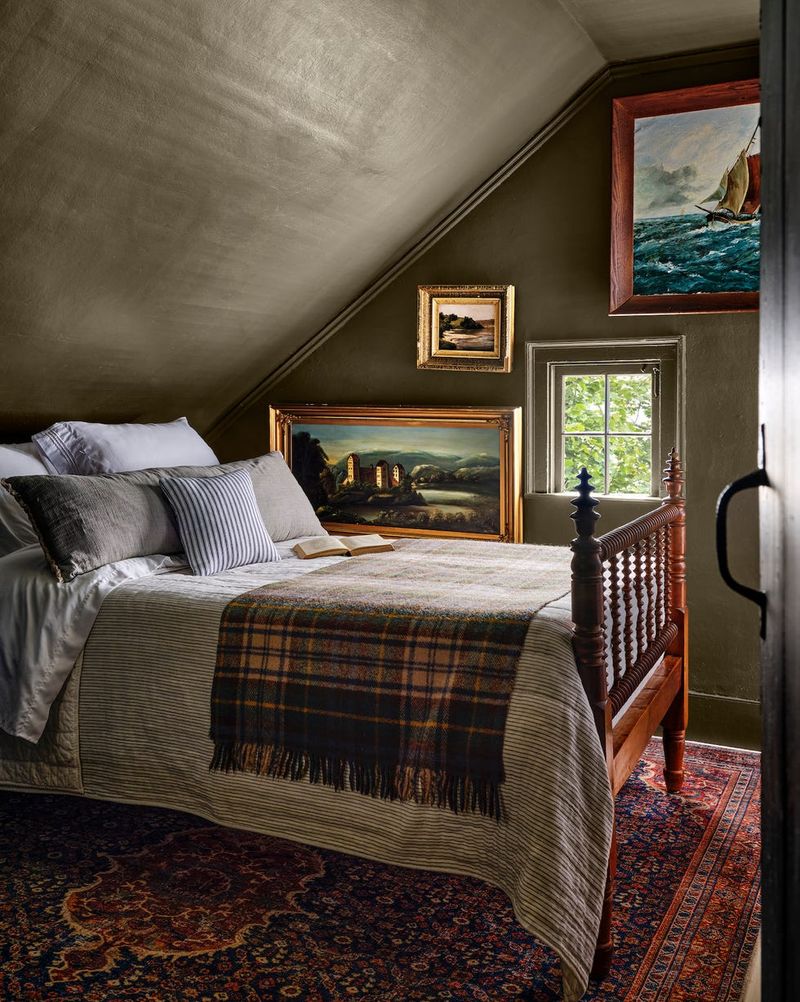
Dark wall colors might feel cozy to you, but they’re often deal-breakers for buyers. Navy, charcoal, or deep burgundy walls make spaces feel smaller and more confined exactly what homebuyers don’t want.
Light, neutral walls help rooms appear spacious and bright. They also provide a blank canvas that allows buyers to envision their own style. I recently helped a seller repaint their deep purple bedroom to a soft greige, and the difference was remarkable.
If you’re preparing to sell, consider repainting dark walls. Colors like pale gray, soft beige, or warm white universally appeal to buyers and photograph beautifully in listings. This simple change often delivers the best return on your pre-sale investment.
4. Poor Lighting
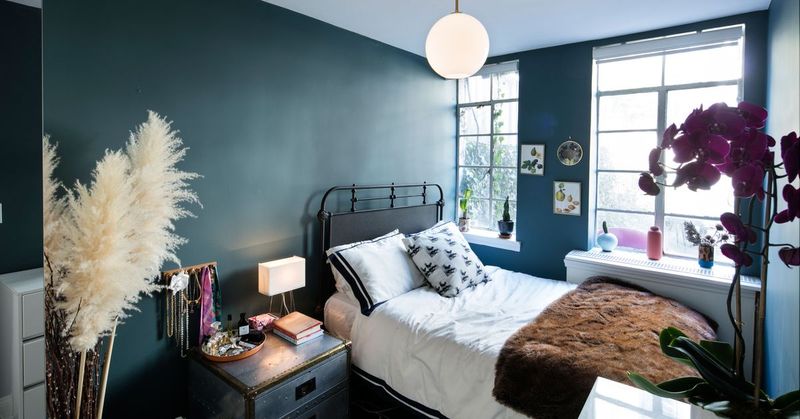
Dim, inadequate lighting ranks high on buyers’ list of bedroom turnoffs. A single overhead light casting harsh shadows creates an unwelcoming atmosphere that feels depressing rather than restful.
Bedrooms need layered lighting to feel inviting. This means a combination of ambient lighting (overhead fixtures), task lighting (reading lamps), and accent lighting (wall sconces or subtle mood lighting). Natural light matters tremendously too heavy, light-blocking window treatments should be replaced with options that maximize daylight.
Upgrading bedroom lighting doesn’t require major electrical work. Simply adding a pair of stylish bedside lamps, ensuring bulbs are appropriate brightness (at least 75 watts equivalent), and keeping windows unobstructed can transform a gloomy space.
5. Excessive Decor

Overdecorated bedrooms overwhelm potential buyers faster than almost any other mistake. Collections of figurines, walls covered in personal photos, and surfaces filled with knickknacks create visual chaos that prevents buyers from seeing the room itself.
The bedroom should feel like a peaceful retreat. Limit decorative items to just a few carefully chosen pieces that enhance the space without dominating it. One client’s bedroom had over 40 decorative items after we reduced this to just five strategic pieces, the room suddenly felt twice as large.
If you’re selling, pack away personal collections and family photos. Replace them with minimal, neutral decor like a single artwork above the bed and perhaps one decorative item per surface. This restraint helps buyers envision their own belongings in the space.
6. Mismatched Bedding

Haphazard bedding sends subtle signals about neglect that make buyers uncomfortable. Mismatched sheets, a worn comforter, and random pillows grabbed from other rooms create a sense of disharmony that’s surprisingly off-putting.
The bed forms the visual centerpiece of any bedroom. Investing in a coordinated bedding set with a neutral comforter or duvet, matching shams, and crisp sheets makes an enormous difference. When I helped stage a client’s home, simply swapping their mismatched bedding for a hotel-style white ensemble increased perceived value dramatically.
Think of bedding as packaging for the bedroom it should look intentional and inviting. Even budget-friendly options can look luxurious when they’re part of a cohesive design scheme that signals care and attention to detail.
7. Too Many Pillows
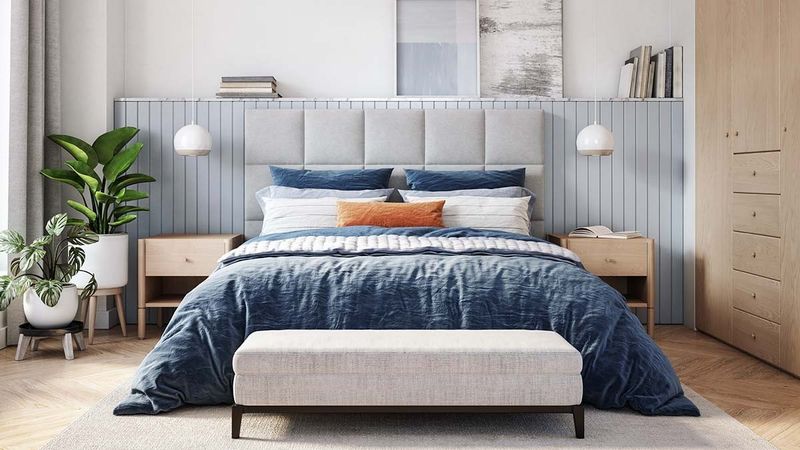
The pillow explosion trend has become a major buyer turnoff. Walking into a bedroom where the bed disappears under a mountain of decorative pillows makes buyers think about hassle, not relaxation.
Excessive pillows signal high maintenance to today’s practical buyers. They wonder, “Where do all these go at night?” and “Do I need to spend 10 minutes making the bed each morning?” For staging purposes, I recommend a maximum of two sleeping pillows per person, plus 2-3 decorative pillows not the 12+ arrangement many homeowners display.
Buyers want bedrooms that feel both stylish and functional. A tastefully arranged bed with just enough pillows to look finished without overwhelming the space strikes the perfect balance between aesthetic appeal and practical living.
8. Outdated Curtains
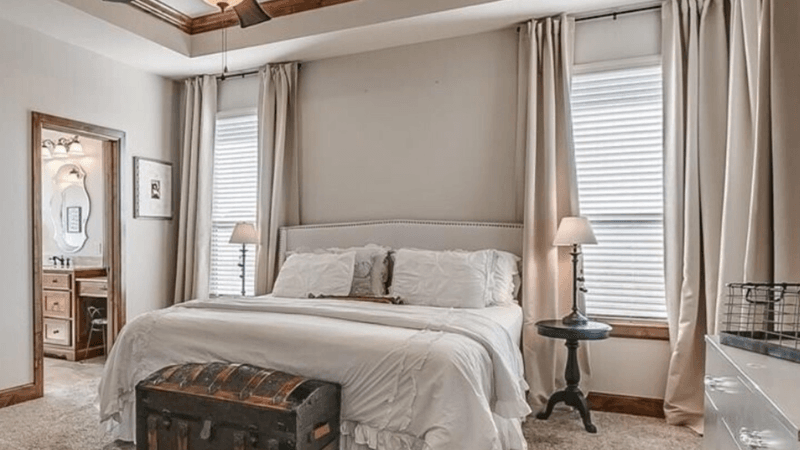
Heavy, outdated window treatments age a bedroom instantly. Those floral print curtains with swags and valances from the 1990s make the entire room feel stuck in time, regardless of other updates you’ve made.
Modern buyers crave clean lines and simplicity. Replacing dated curtains with simple panels in neutral tones creates an immediate sense of contemporary style. I’ve seen rooms transform completely just by swapping ornate window treatments for streamlined options.
If you’re selling, consider simple white, cream, or gray panels that reach from ceiling to floor. This elongates the room visually and allows natural light to flow in. Skip the heavy valances, swags, and tiebacks their absence alone can update a bedroom by decades without major renovation.
9. Busy Rugs
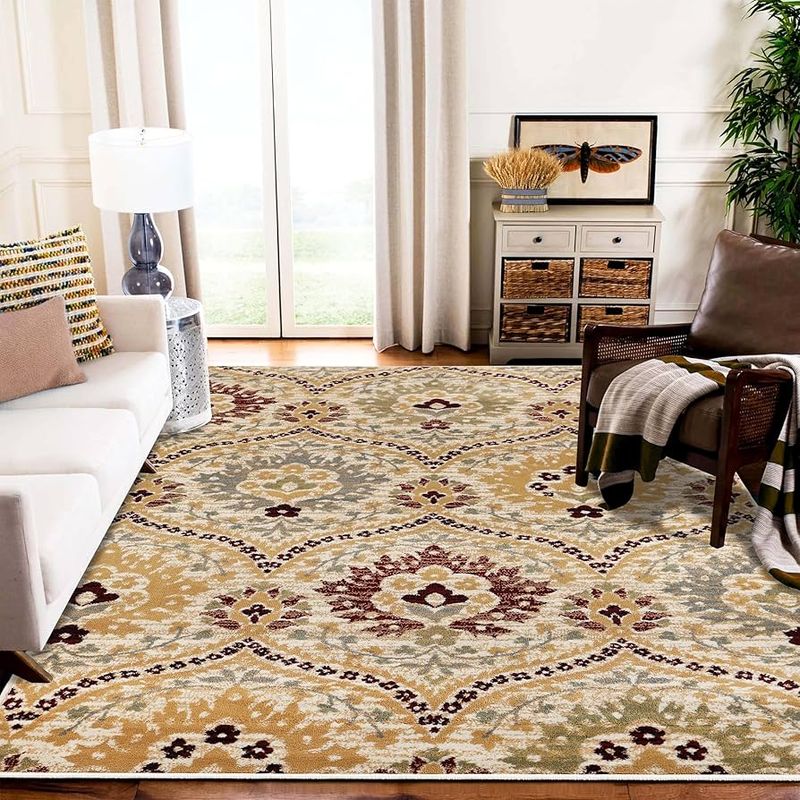
Area rugs with wild patterns or clashing colors create visual chaos in bedrooms. Buyers’ eyes get stuck on an overly busy floor covering instead of appreciating the room’s features and proportions.
The floor anchors your entire bedroom design. A neutral, appropriately-sized rug helps define the space while adding warmth and comfort. When I replaced a client’s red and black geometric rug with a soft cream option, the entire room suddenly felt more spacious and serene.
For selling success, choose rugs in subtle textures rather than bold patterns. Soft grays, beiges, or muted blues complement most decor styles without overwhelming the space. Ensure the rug is properly sized it should extend beyond the bed on three sides but not touch walls or block doorways.
10. Uninviting Colors
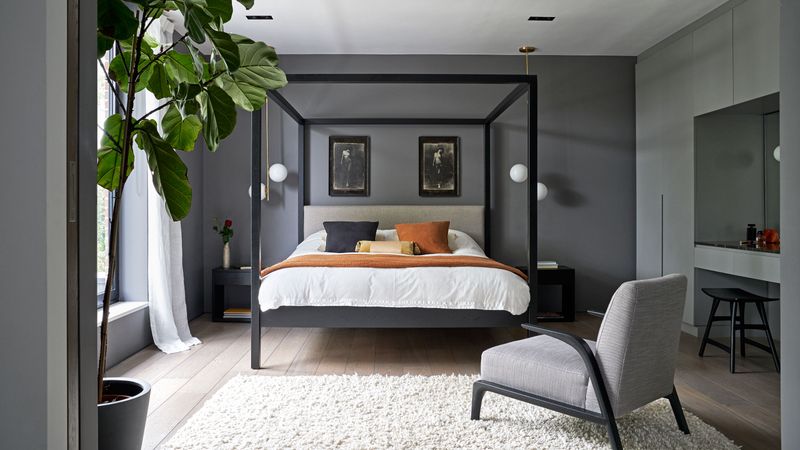
Color psychology matters tremendously in bedrooms. Jarring color combinations like bright orange walls with purple accents create emotional discomfort rather than the tranquility buyers seek in sleeping spaces.
Bedrooms should evoke calm and rest. Soft, coordinated color palettes in blues, greens, grays, or warm neutrals consistently appeal to the widest range of buyers. One client insisted on keeping their bright red accent wall after finally agreeing to repaint in a soft taupe, they received an offer within days.
When preparing to sell, consider repainting in versatile neutrals that help buyers envision themselves in the space. If you want some personality, add color through easily changeable accessories like throw pillows or artwork rather than permanent elements like wall paint or built-in features.
11. Lack of Storage
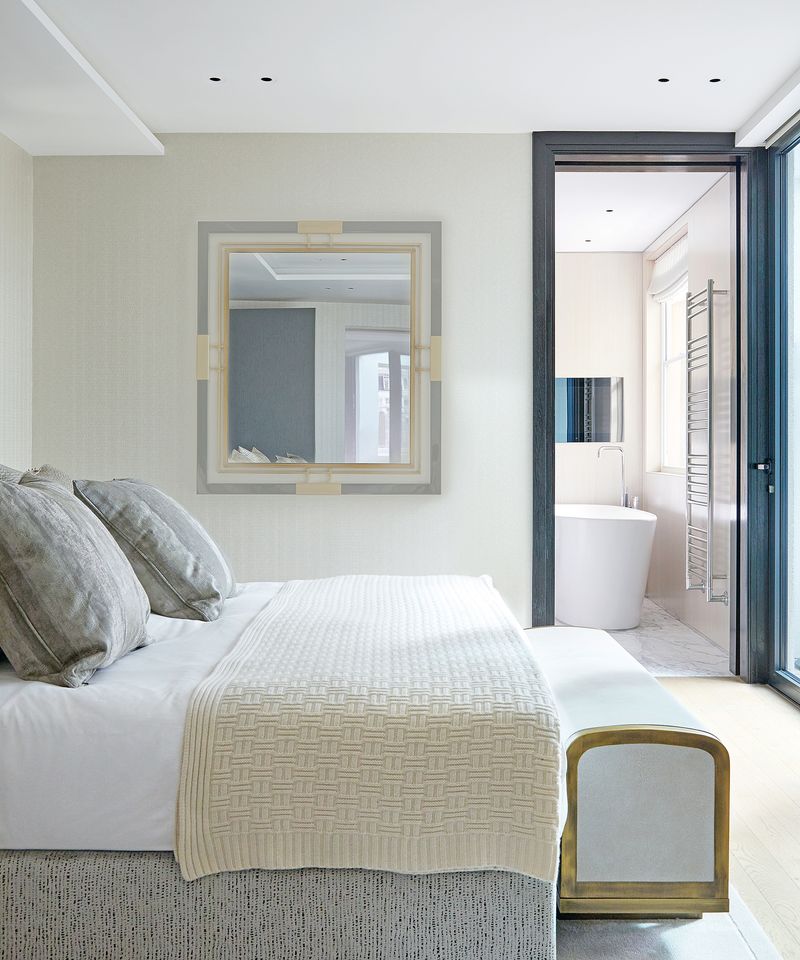
Inadequate storage sends buyers running faster than almost any other bedroom flaw. Tiny closets, visible clothing racks, and overflowing dressers signal to buyers that their belongings won’t fit either.
Storage solutions don’t always require renovation. I helped one client install an inexpensive closet organization system that tripled usable space in their existing closet. Simple changes like adding a dresser, installing floating shelves, or incorporating under-bed storage can make a significant difference.
When showing your home, ensure closets are only half-full to demonstrate ample storage capacity. Remove out-of-season clothing, pare down shoe collections, and organize remaining items neatly. This simple staging trick creates the impression of generous storage even in smaller bedrooms, making them much more appealing to space-conscious buyers.
12. Small Spaces
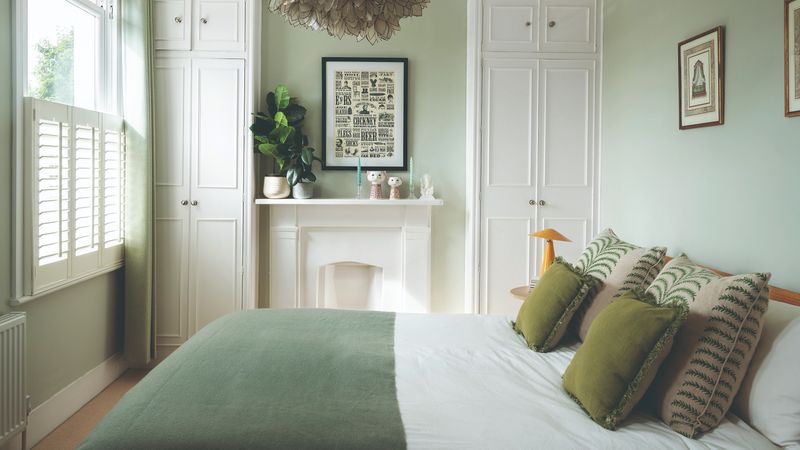
Tiny bedrooms present obvious challenges when selling, but poor furniture placement makes small spaces feel even more cramped. Buyers will quickly dismiss bedrooms that feel like closets rather than comfortable retreats.
Strategic furniture arrangement can make modest bedrooms feel surprisingly spacious. Choose appropriately-scaled furniture a queen bed instead of king in smaller rooms, and nightstands with open bases rather than heavy dressers. Mounting window treatments higher and wider than the actual window creates an illusion of larger windows and more space.
Mirrors work wonders in small bedrooms. A large mirror opposite a window reflects light and visually doubles the space. I’ve transformed tiny bedrooms from claustrophobic boxes to charming sanctuaries simply by adjusting scale, adding mirrors, and ensuring proper furniture placement that maximizes floor space.
13. Visible Cords
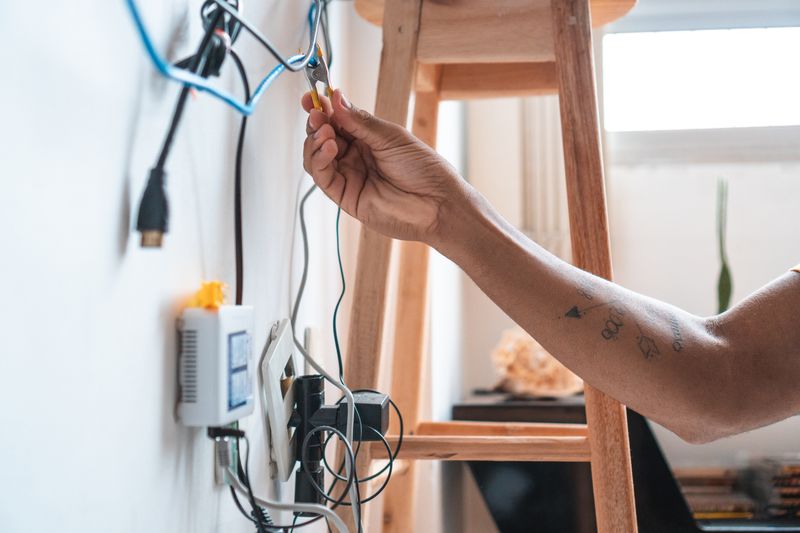
Tangled electrical cords create visual chaos that screams “outdated” to tech-savvy homebuyers. Extension cords snaking across floors, clusters of wires behind nightstands, and phone chargers dangling from outlets all detract from an otherwise lovely bedroom.
Cable management solutions are inexpensive yet make a massive difference in perceived quality. Simple cord covers, cable clips, or cord management boxes can transform a messy tech situation into a clean, organized setup. Moving furniture slightly to conceal outlets often eliminates the problem entirely.
When showing your home, minimize electronic devices in bedrooms. A single lamp and perhaps a clock radio provide function without the cord clutter of multiple chargers, speakers, and gadgets. This small detail signals to buyers that the home is well-maintained down to the smallest details.
14. Unbalanced Layout
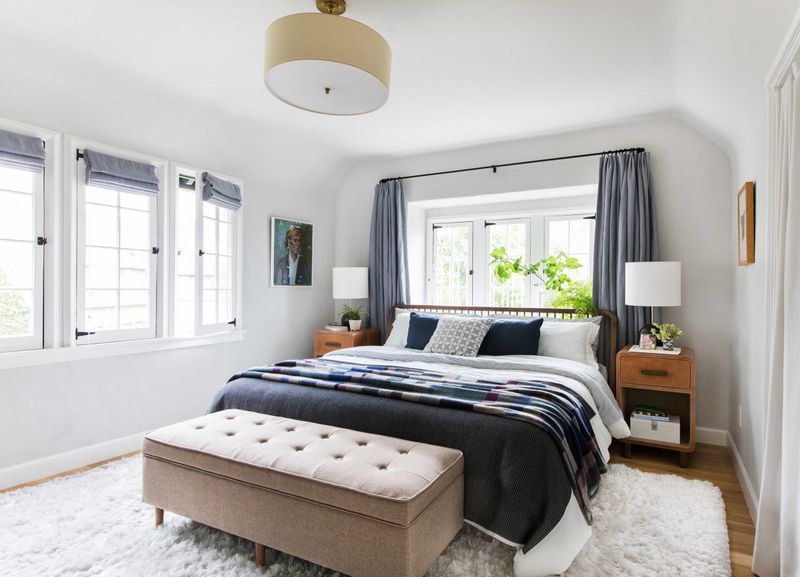
Poorly arranged bedrooms confuse buyers and make spaces feel awkward. Beds crammed into corners, furniture blocking windows, or nightstands that don’t match create visual tension rather than harmony.
Balance matters tremendously in bedroom design. The bed should anchor the space, ideally centered on the focal wall with matching nightstands flanking both sides. Traffic flow should feel natural, with clear pathways around furniture. When I rearranged one client’s bedroom from an awkward corner placement to a balanced central layout, the same furniture suddenly made the room feel twice as luxurious.
Even small bedrooms benefit from symmetry and balance. If space is tight, consider wall-mounted lighting instead of table lamps, or floating nightstands instead of bulky ones. These adjustments maintain visual harmony while accommodating spatial limitations.
15. Cheap Furniture
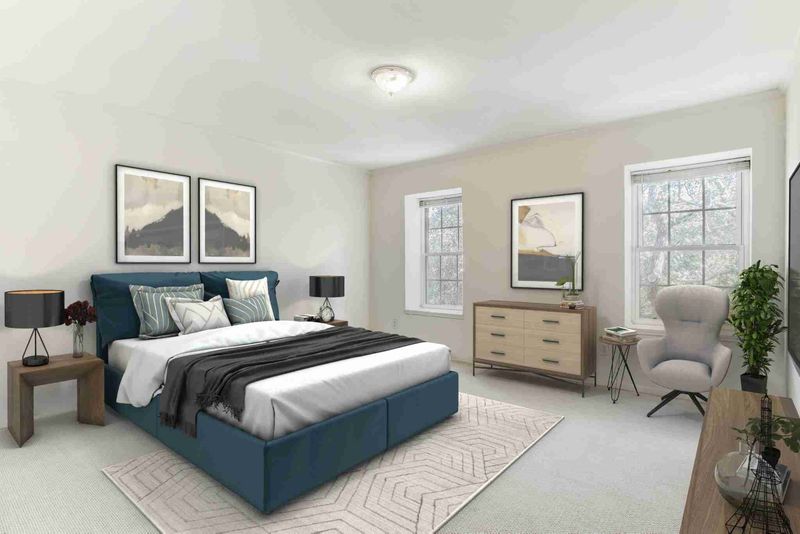
Flimsy, damaged, or obviously inexpensive furniture sends subtle signals about the overall quality of your home. Buyers notice wobbling particleboard dressers, sagging mattresses, and rickety bed frames even if they don’t comment on them directly.
You don’t need luxury furniture to impress buyers, but pieces should appear solid and well-maintained. A simple, clean-lined bed frame in good condition beats an ornate but damaged one every time. If budget is limited, focus on the bed a crisp, well-dressed bed with a decent headboard creates a center of quality that elevates the entire room.
Consider renting key pieces if your furniture is visibly worn or damaged. Many staging companies offer furniture rental packages specifically designed for selling homes, allowing you to present your bedroom in its best possible light without permanent investment.
16. No Personal Touch
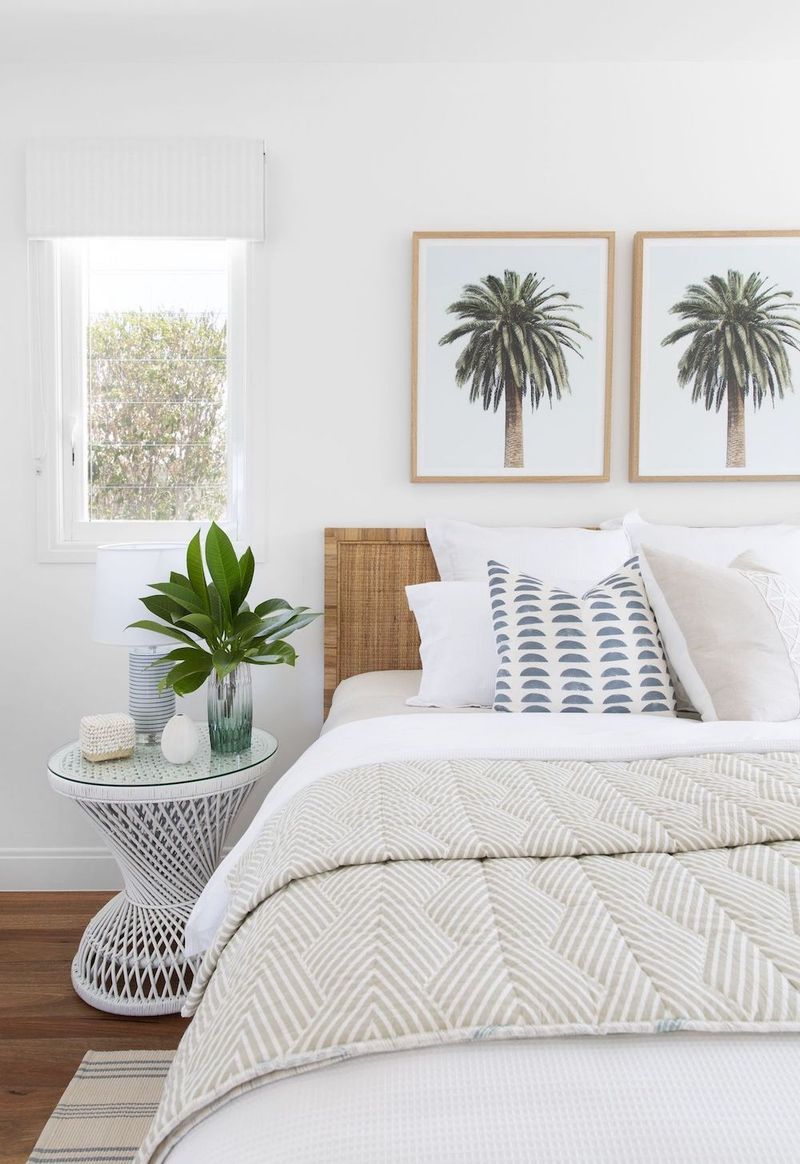
While decluttering is essential, bedrooms completely stripped of personality feel cold and uninviting to buyers. Rooms that resemble sterile hotel spaces rather than lived-in sanctuaries fail to create emotional connections.
The key is balancing neutrality with thoughtful personality. Rather than removing all character, incorporate universal elements that suggest lifestyle without being overly personal. A small stack of books on the nightstand, a throw blanket at the foot of the bed, or a simple plant adds warmth without overwhelming the space.
I helped one seller transform their too-sterile master bedroom by adding a textured throw, a simple landscape painting, and a small arrangement of fresh flowers. These touches created an aspirational yet attainable lifestyle vision that buyers could easily project themselves into, resulting in multiple offers.
17. Cluttered Surfaces
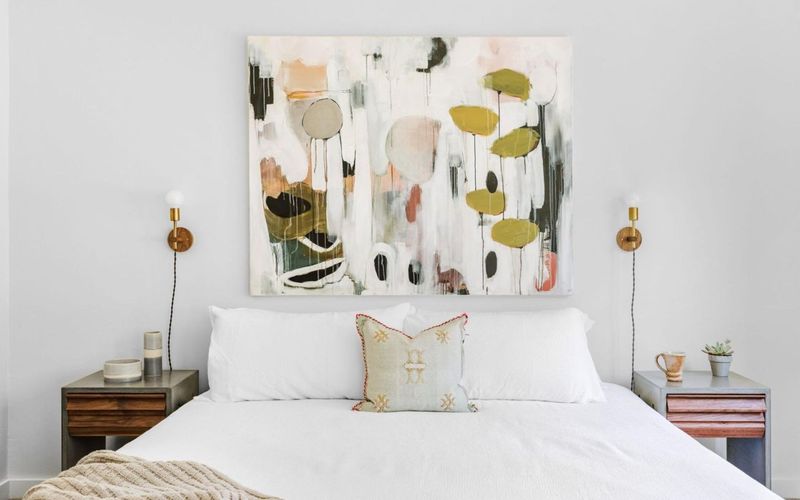
Messy, overcrowded nightstands and dressers create immediate negative impressions. Buyers scanning these surfaces see daily chaos rather than peaceful organization, making them question whether the home has sufficient storage.
Surface clutter feels particularly intrusive in bedrooms. Clear nightstands except for perhaps a lamp and one decorative item. Dressers should display at most three carefully chosen objects, not collections of perfume bottles, jewelry, or random accumulations. When I helped stage a home where the owners had cluttered surfaces, clearing these areas made the room feel twice as large.
For selling success, embrace the rule of three: limit decorative items to no more than three per surface, grouped attractively rather than scattered. This approach creates visual breathing room while maintaining enough styling to prevent the sterile feeling that comes from completely bare surfaces.

